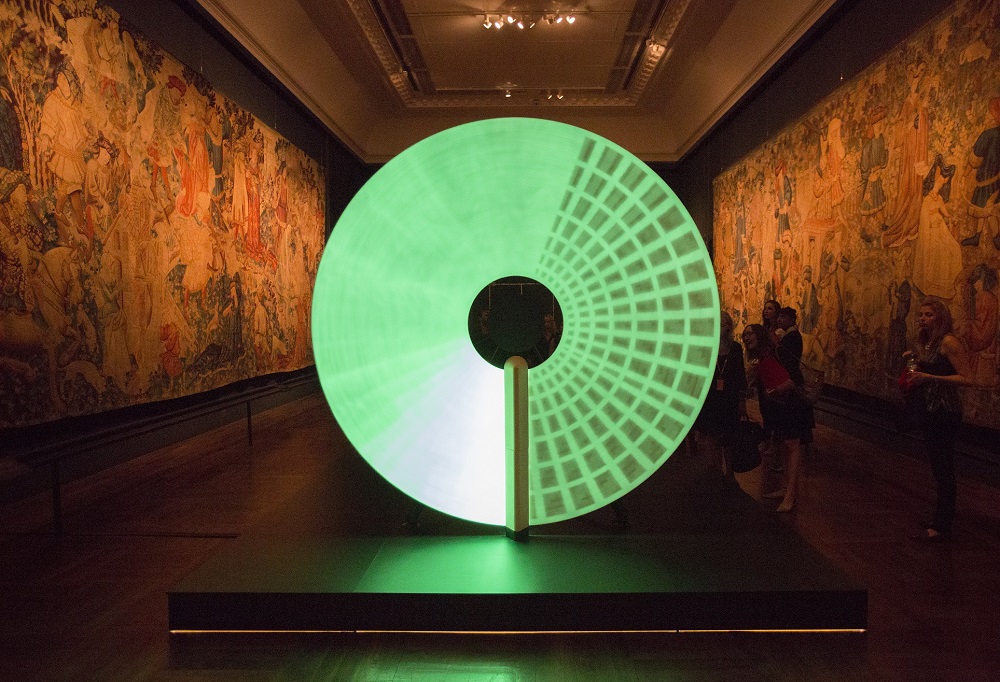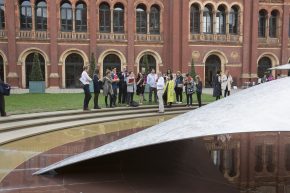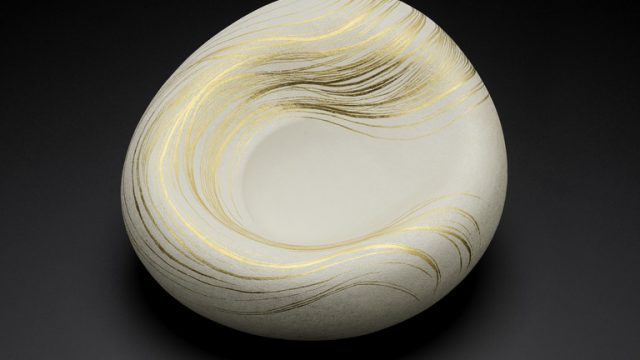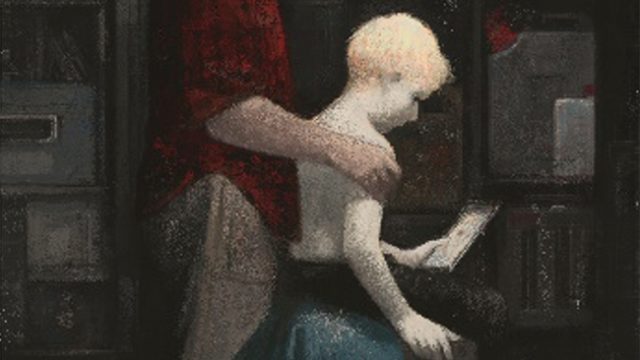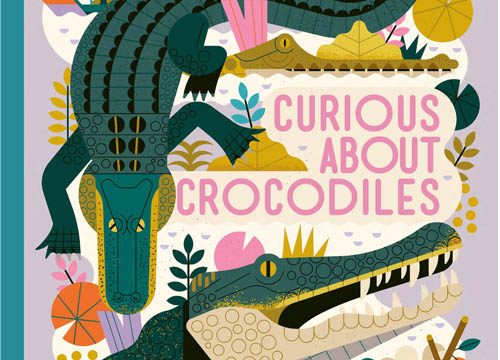Halfway through the Festival week, I finally have time to sit down at my computer to write this post. The London Design Festival is the main focus of my job – I work on everything from the installations and displays to the huge events programme, press, parties, and everything in between.
The London Design Festival is an annual nine day Festival that celebrates contemporary design in all its forms – and celebrates London as the creative capital of the world. Now in its 12th year, the London Design Festival features over 350 events across London – from tiny pop ups to open studios and big trade shows like 100% Design.
As the Festival Hub, the V&A is at the heart of all Festival activity – the first point of call for visitors wishing to pick up information, orientate themselves, visit the installations, attend events, and take in the Festival atmosphere.
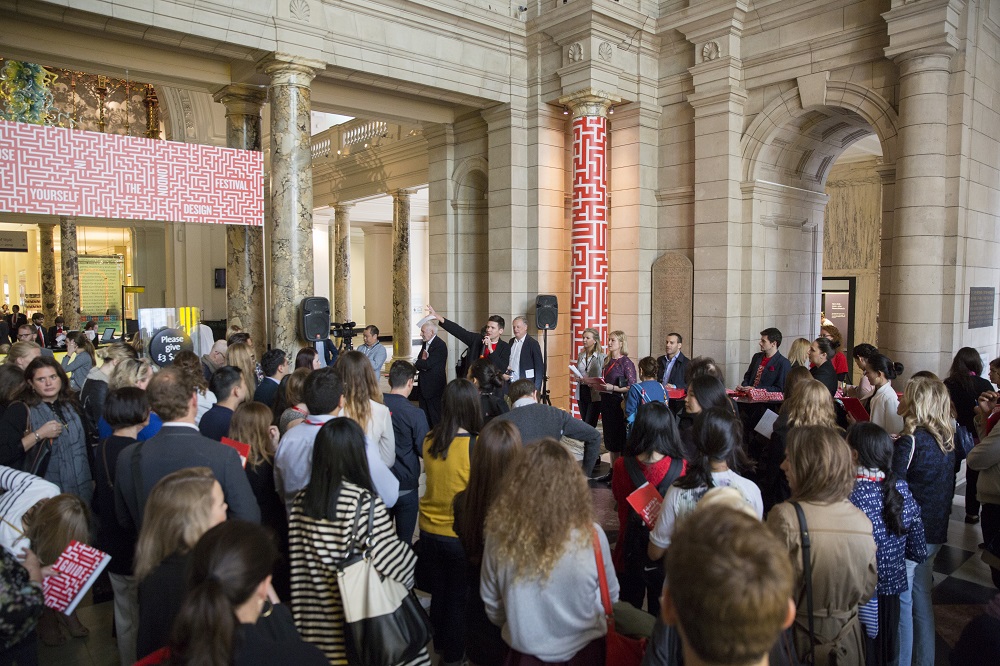
The installations created around the Museum for the London Design Festival at the V&A range in size and scale, materials and purpose. They are created by designers working in all sorts of different mediums, who work site-specifically within their museum space to come up with new and exciting work to show during the Festival.
The Festival’s Landmark Project this year is a vast, site-specific installation in the beautiful Raphael Gallery. Double Space for BMW – Precision and Poetry in Motion by multi-disciplinary designers Edward Barber and Jay Osgerby, working in conjunction with BMW Design. The installation is an immersive experience – a kinetic sculpture suspended above the Raphael Gallery, slowly rotating on a central axis, and creating strange, moving reflections of the cartoons, the gallery, and visitors themselves…
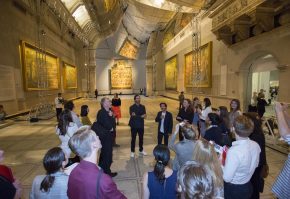
Elsewhere in the Museum, visitors will find a hoard of other installations, specially commissioned and created for the Festival.
Up by the Glass Gallery, glass artist Jeremy Maxwell Wintrebert has created Human Nature, a series of arrangements of large glass cylinders, arranged in response to the architecture of the surrounding galleries. The cylinders were hand-blown at Glasshutte Lamberts – one of the oldest mouth-blown glass factories in the world.
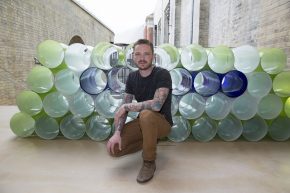
In the Tapestries Gallery, the darkest public space in the Museum, a multi-disciplinary trio of designers have created another extraordinary moving installation. Candela, by Felix de Pass, Ian McIntyre and Michael Montgomery, is a large ceramic plate that sits in the centre of the darkened gallery. The ceramic is coated with a phosphorescent material normally used on watch faces, and once charged with light it emits an eerie green glow. As the circular ceramic plate slowly rotates, it passes through a light which charges it, and creates a series of slowly-emerging, beautiful and mesmeric patterns of light on the piece.
Out in the John Madejski Garden, there are two pieces to explore. Firstly, Crest by Zaha Hadid Architects, sitting within and mirroring the sweeping curves of the pool. This abstract sculpture is made of finely pressed aluminium, which reflects the movement of the water. The shape of the piece echoes the crest of a wave, as well as creating a new ‘peak’ or focal point within the Garden itself.
Also in the Garden is a black wooden shed, designed by Nathalie de Leval for Paul Smith. Measuring just 3, x 3m, the shed is the same size as Paul Smith’s first ever shop in Nottingham, and can be rotated to face a beautiful view or sunset. This piece is part of The Wish List – a display of ten piece, created in American hardwoods. For this project, the American Hardwood Export Council worked with Benchmark, asking ten eminent designers (such as Paul Smith…) to work with an emerging designer to design a piece that they had always wanted for their home – and to realise it in hardwood.
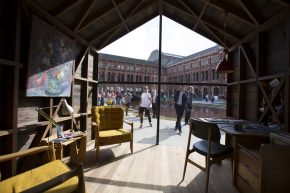
.. this is just the tip of the iceberg – the Festival features 12 installations around the Museum (including The Wish List – which is really ten in its own right), as well as a vast programme of events, including talks, tours, presentations, discussions, workshops, demonstrations, and other special events, which take p[lace in the Lydia and Manfred Gorvy Lecture Theatre, and in the Learning Centre.
There is more information on the London Design Festival at the V&A here – http://www.vam.ac.uk/content/exhibitions/london-design-festival-at-the-v-and-a-2014/
The London Design Festival runs until 21 September at venues across London – North, South, East and West. At the V&A, selected installations will remain up until the end of October.
